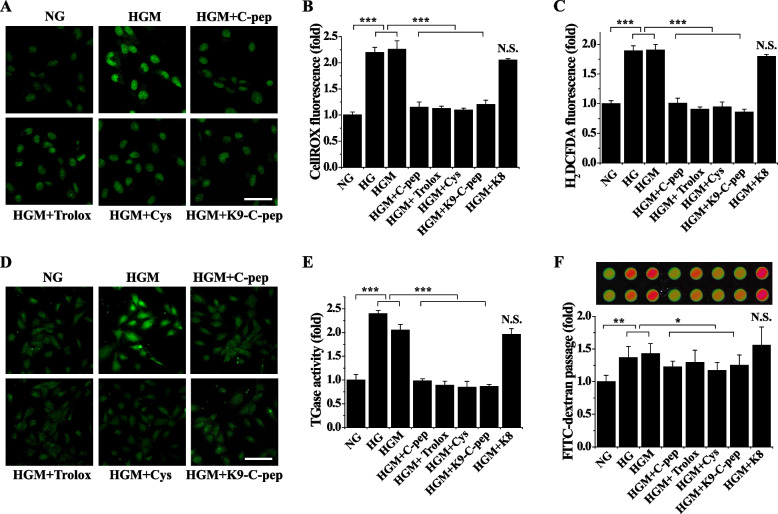Fig. 4.
K9-C-peptide inhibits the vicious cycle of ROS generation and TGase activation and in vitro endothelial permeability in HGM-treated endothelial cells. Human retinal endothelial cells were incubated with normal glucose (NG) or high glucose (HG) for 6 days or high glucose for 3 days followed by normal glucose for 3 days (HGM) in the presence of 1 nM K9-C-peptide or K8 polypeptide, 0.5 µM Trolox, 50 µM cystamine (Cys), or 1 nM human C-peptide (C-pep). ROS generation and in situ TGase activity were determined by confocal microscopy. A–C Intracellular ROS levels were visualized using CellROX™ green (A, B) and H2DCFDA (C) and were quantitated by fluorescence intensity (n = 4). A Representative images of CellROX™ green. Scale bar, 50 µm. B, C Effects of inhibitors on HGM-induced ROS generation. D Representative images of in situ TGase activity. Scale bar, 100 µm. E Effects of inhibitors on HGM-induced TGase activation (n = 4). F A representative fluorescence image of in vitro endothelial cell monolayer permeability. In vitro endothelial permeability was quantitated by measuring FITC-dextran passage (n = 4). Statistical significance was determined by one-way ANOVA with Holm-Sidak’s multiple comparisons test. *P < 0.05, **P < 0.01, ***P < 0.001. NS, non-significant

